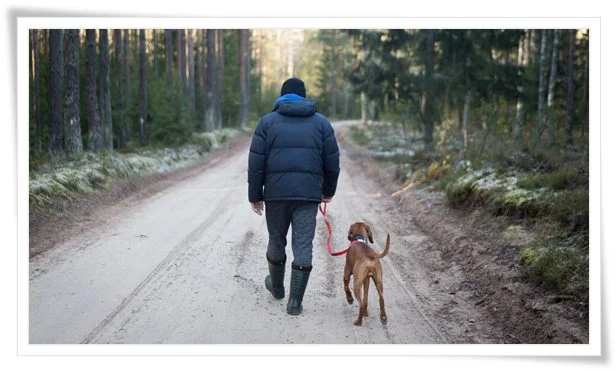Dog Walking Training
Interested to train your dogs? You can find alot of tips for dog training through the web nowadays. Anyways, here are some resources on dog walking training. Feel free to browse the article below.
Training Your Dog To Walk On A Leash
Your goal is to train your dog to walk on a leash with comfort and control. Even if you are in a hurry to take the dog out, you cannot relax the rules and permit the dog to pull you down the front steps or on the walk. Again, that isn’t training the dog to walk on a leash; that is the dog training you to walk behind it on a leash.
Training older puppies and adult dogs to walk on a leash requires a training collar.
There are three basic types of training dog collars. The head collar, muzzle-like in appearance, is probably the most humane way to train a pet since it eliminates pressure around the neck. The chain slip collar, with medium-sized links, should never be left on the dog when not in use. Master the "zipper tug" of the chain collar as the puppy learns by the sound and not the restraint. A nylon slip collar that fits around the dog’s neck but not over the head can be used on more cooperative dogs. Effective corrections are practically impossible with a nylon slip collar that fits over the dog’s head. Avoid chain leashes, retractable leashes, fancy plastic leashes, and wide leashes until control is established in dog leash training. Both hands should grasp the leash during the walk for maximum control.
Dogs pulling when walking on the leash are filled with excess energy. Unless you can expend that energy, it will be difficult for the dog to control itself.
Begin the education process by training the dog to sit-stay while you are putting the leash on. If your dog doesn’t know the command sit-stay, then practice training a sit-stay without the distraction of an expected walk. If the dog doesn’t stay, delay the walk until it does. Don’t give in or the lesson learned will be it is "ok" to be out of control. That will defeat the purpose of proper training of the dog to walk on the leash. Most dogs learn quickly that they must sit while the collar is put on and the leash is attached to the collar. A dog may be ready to explode in anticipation of its walk, but it must learn to cooperate. Otherwise, the dog will be in control of the walk to come, dragging you behind it — the dog walking on the leash will be more like the dog walking you on the leash, and the precedent is set for a situation out of control. If the dog’s excitement is already out of control, let the dog dance and bounce around. It may take 5 to 10 minutes but your pet will soon realize that you aren’t going anywhere and it will begin to calm down. When reasonable calm is restored, praise calmly, and then proceed outdoors.
You will be more successful if you can tire the dog out before taking it for a leash training walk.
When your dog pulls on the leash and you continue the walk, you are rewarding the behavior of pulling. Quickly snap the leash and release it in one smooth move so the collar tightens and loosens quickly. Stop walking and stand still. The dog will get confused and probably turn towards you. Wait for calm before continuing. Penalize the dog. "Penalize," not "punish". A "penalty" is a leash jerk, not moving when he’s on leash, or just ignoring him. The tug is an attention-getter, a reminder that you are in charge when walking on the leash, so do not yank hard. Only use enough pressure to get the dog’s attention. The object is control, not to punish, frighten or hurt the dog.
When the dog walks on the leash without pulling, calmly heap lots of praise.
Correct improper behavior with persistence and consistency, and NO harsh corrections. You may not get far your first few walks, but if you give in to your dog’s demands the precedent will be set and the dog will continue to pull. Give a sit-stay command for about 5 to 10 seconds every time the pulling starts. This will make training to stop pulling on a leash, and training to walk on a leash much easier.


Comments
Post a Comment